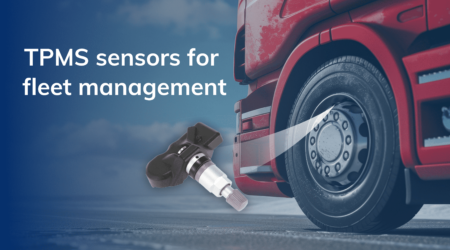10 Reasons to Invest in a Fuel Monitoring Sensor for School Buses.

Every morning, school buses carry our future: children heading to learn, grow, and explore the world. These buses are more than just vehicles; they are a promise of education, safety, and opportunity. Yet, managing a fleet of school buses presents challenges, particularly in fuel consumption. This significantly affects operational costs and environmental impact. Enter the fuel monitoring sensor, a technology designed to transform this landscape.
Fuel monitoring sensors offer a window into the real-time usage of fuel. It provides data that can lead to substantial cost savings, increased efficiency, and reduced environmental harm. This blog explores ten compelling reasons why investing in a fuel monitoring sensor for school buses is not just an option but a necessity for school districts aiming for sustainability, safety, and smart management in their transportation services.
Reason 1: Cost Savings
One of the most immediate benefits of integrating fuel monitoring sensors into school bus fleets is the significant cost savings. By tracking fuel consumption in real time, school districts can identify patterns, inefficiencies, and unnecessary expenses they otherwise might miss. For instance, idling, which is common in school buses, burns fuel without moving a meter. Fuel sensors can highlight such wasteful practices, prompting changes that reduce fuel consumption.
Consider a school district that implements strict policies on idling, optimized routes, and driver training programs based on data from fuel sensors. The result? A substantial decrease in fuel usage, translating to lower expenses. Imagine saving just a gallon of fuel per bus per day across a fleet of 100 buses. With an average school year of 180 days, the savings accumulate, demonstrating the financial wisdom behind this technology investment.
Reason 2: Environmental Benefits
In today’s world, the environmental impact of our actions has never been more scrutinized. School buses, as integral parts of the educational infrastructure, have a role to play in this arena. Fuel monitoring sensors not only offer financial advantages but also contribute significantly to environmental preservation. By optimizing fuel consumption, these devices help reduce the carbon footprint of school bus fleets.
Excessive fuel consumption directly correlates with higher emissions of carbon dioxide, a primary greenhouse gas. Implementing fuel monitoring systems allows for a detailed analysis of fuel usage, enabling adjustments that lead to cleaner operations. For example, reducing idling times and ensuring buses operate at peak efficiency can decrease the amount of fuel burned, thus lowering emissions. Schools adopting this technology send a powerful message about their commitment to sustainability and environmental stewardship. They are also educating students on the importance of eco-friendly practices by example.
Reason 3: Improved Efficiency
Efficiency in school bus operations goes beyond the simple calculation of time and distance. It encompasses optimal fuel usage, route planning, and the minimization of unnecessary operational costs. Fuel monitoring sensors play a pivotal role in achieving this efficiency. By providing data on fuel usage patterns, these sensors enable school districts to optimize routes based on actual consumption rates and traffic conditions. They ensure buses are used in the most fuel-efficient manner possible.
Moreover, data from fuel sensors can influence driver behavior by identifying instances of harsh acceleration or idling, both of which contribute to increased fuel consumption. Through targeted training and incentives, schools can encourage drivers to adopt more fuel-efficient driving practices. Additionally, efficiency gains from using fuel monitoring sensors can lead to a reduction in the total number of buses needed for daily operations, further decreasing operational costs and environmental impact.
Reason 4: Enhanced Safety
Fuel monitoring sensors contribute to this critical aspect in several ways. Firstly, they can detect patterns indicative of risky driving behaviors, such as rapid acceleration and excessive idling, which not only increase fuel consumption but also pose safety risks. By monitoring fuel usage, schools can identify and address these behaviors, thereby enhancing the safety of students on board.
Additionally, unusual changes in fuel consumption can signal potential mechanical issues with a bus. Early detection of such problems allows for timely maintenance, reducing the risk of breakdowns and accidents. Ensuring buses are in optimal condition contributes significantly to the overall safety of school transportation. It makes fuel monitoring sensors an invaluable tool in a comprehensive safety strategy.
Reason 5: Data-Driven Decisions
In the era of information, data-driven decision-making is key to operational success. Fuel monitoring sensors provide a wealth of data that can inform various aspects of school transportation management. This data allows for a nuanced understanding of how fuel is consumed, highlighting opportunities for optimization that might not be apparent without detailed analysis.
For instance, by analyzing fuel usage data, schools can identify which routes are less efficient and why, leading to route adjustments that save both fuel and time. This approach also extends to fleet management decisions, such as determining the ideal size of the fleet based on actual needs or identifying the most fuel-efficient buses for specific routes. The ability to make informed decisions based on reliable data not only improves operational efficiency but also supports financial planning and environmental goals.
Reason 6: Maintenance Alerts
Preventative maintenance is key to prolonging the lifespan of school buses and ensuring they remain safe for student transport. Fuel monitoring sensors are instrumental in this regard, offering real-time data that can predict when a bus might need servicing. By tracking fuel consumption patterns, these sensors can alert fleet managers to inefficiencies that often indicate underlying mechanical issues, such as clogged air filters or issues with the fuel injection system.
This proactive approach to maintenance means problems can be addressed before they escalate into more serious, costly repairs or lead to unexpected breakdowns. Regular, data-informed maintenance keeps buses running smoothly, reduces the likelihood of emergency repairs, and extends the overall service life of the fleet. This not only saves money in the long term but also ensures that buses are less likely to experience issues that could compromise student safety.
Reason 7: Theft Prevention
Fuel theft can be a significant issue for school bus fleets, leading to unexpected operational costs and logistical headaches. Fuel monitoring sensors provide an effective solution to this problem. These systems can detect unusual drops in fuel levels that aren’t consistent with normal consumption patterns, indicating potential theft or leakage. Immediate alerts allow fleet managers to investigate discrepancies promptly, minimizing losses and facilitating quick action to prevent further incidents.
Moreover, the presence of fuel monitoring systems can deter potential thieves, reducing the risk of fuel theft. This added layer of security ensures that resources are used efficiently and that the school district’s investment in fuel is protected, contributing to the overall financial health and operational stability of the transportation service.
Reason 8: Longevity of Vehicles
The longevity of school buses directly impacts the financial and operational efficiency of school transportation systems. Fuel monitoring sensors play a crucial role in extending the lifespan of these vehicles. By ensuring fuel is used efficiently and maintenance issues are addressed promptly, these sensors help prevent the wear and tear that can accelerate a vehicle’s decline.
Efficient fuel use reduces the stress on the engine and other critical components, leading to less frequent repairs and replacements. This not only keeps maintenance costs down but also means that buses can remain in service for longer periods without compromising safety or efficiency. The data provided by fuel monitoring sensors allows for a more strategic approach to fleet management. It ensures that vehicles are retired and replaced at the optimal time to maintain a high-performing fleet.
Reason 9: Regulatory Compliance
School bus operations are subject to various environmental and safety regulations, which can vary by region. Fuel monitoring sensors aid in compliance with these regulations by ensuring that fuel consumption is as efficient as possible and emissions are minimized. By providing accurate, real-time data, these systems enable school districts to demonstrate their commitment to environmentally friendly practices and adherence to safety standards.
In some jurisdictions, demonstrating efforts to reduce fuel consumption and lower emissions can also lead to financial incentives or grants, further benefiting schools. The ability to report on fuel usage and efficiency improvements simplifies the process of meeting regulatory requirements. It can enhance the reputation of the school district as a responsible and forward-thinking entity.
Reason 10: Parental Peace of Mind
Finally, the use of fuel monitoring sensors in school buses offers an often overlooked benefit. When parents know that the school district is investing in technology that enhances safety, efficiency, and environmental responsibility, their confidence in the school transportation system increases. This transparency about operational improvements and commitment to student welfare can strengthen the trust between schools and the communities they serve.
Furthermore, the efficiencies and savings achieved through fuel monitoring can be redirected into other areas of the education system, enhancing the overall quality of education. Parents appreciate knowing that resources are being managed wisely, contributing to a better learning environment for their children. In this way, fuel monitoring sensors not only improve the operational aspects of school transportation but also bolster the school’s relationship with parents and the wider community.
Conclusion
Investing in fuel monitoring sensors for school buses offers a myriad of benefits, from significant cost savings and environmental improvements to enhanced safety and operational efficiency. These technologies provide the data necessary for informed decision-making, proactive maintenance, theft prevention, and regulatory compliance. Moreover, they extend the service life of vehicles and foster a sense of trust and reassurance among parents.
As schools look to the future, embracing technologies that support sustainable operations is not just a smart financial decision. It’s a commitment to the safety and well-being of students and a testament to environmental stewardship. The adoption of fuel monitoring sensors in school bus fleets is a clear step toward a more sustainable, efficient, and responsible approach to student transportation. It reflects the values we wish to instill in the next generation.



